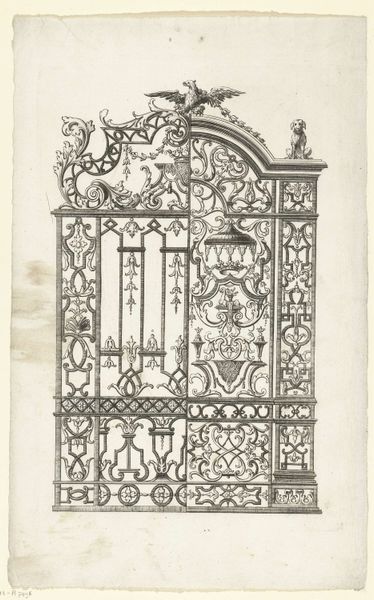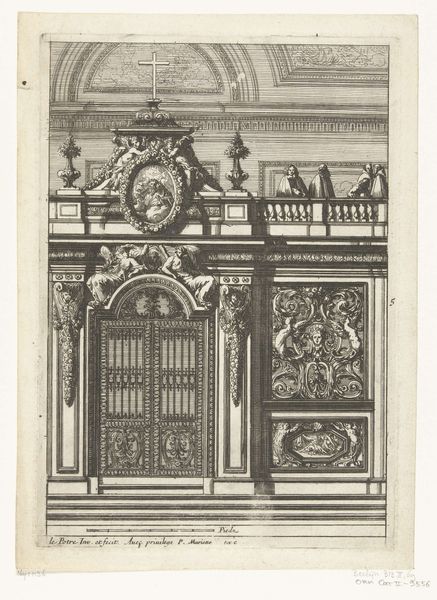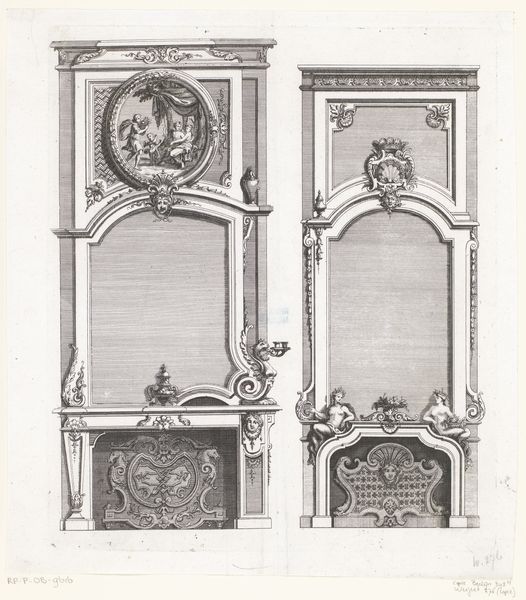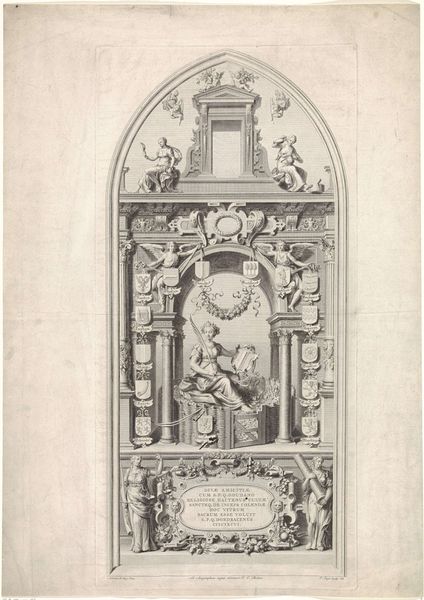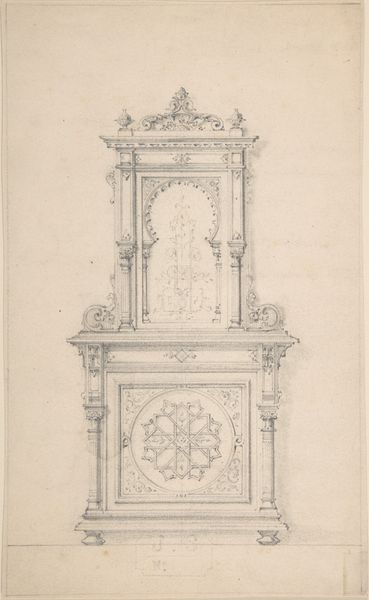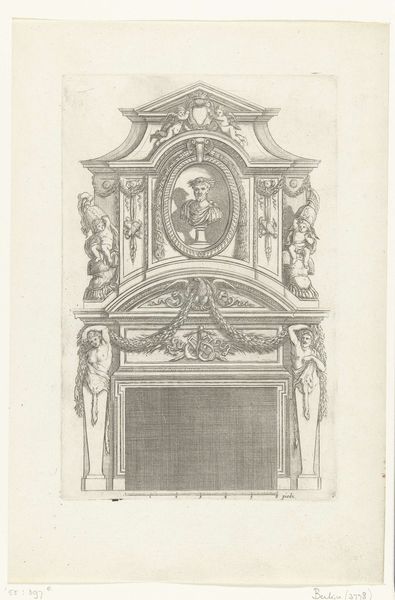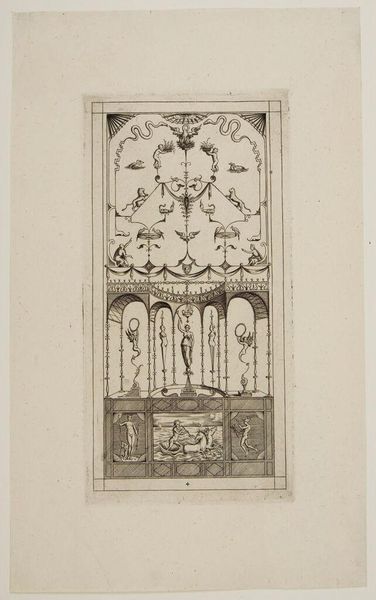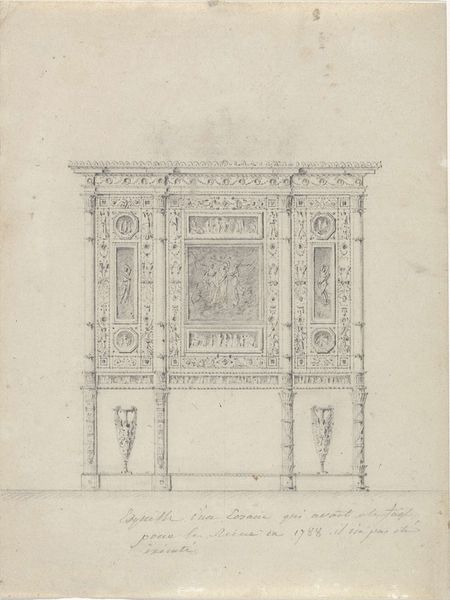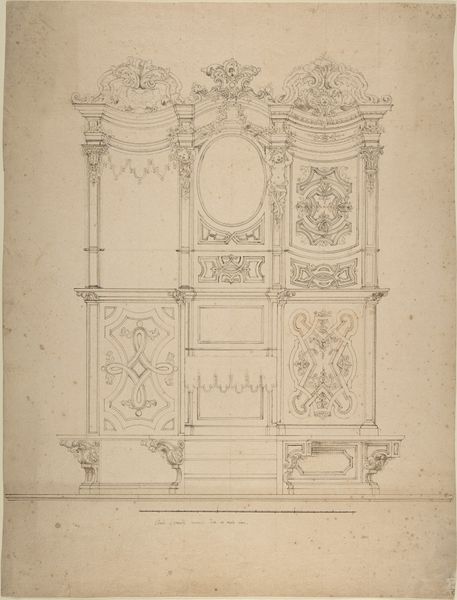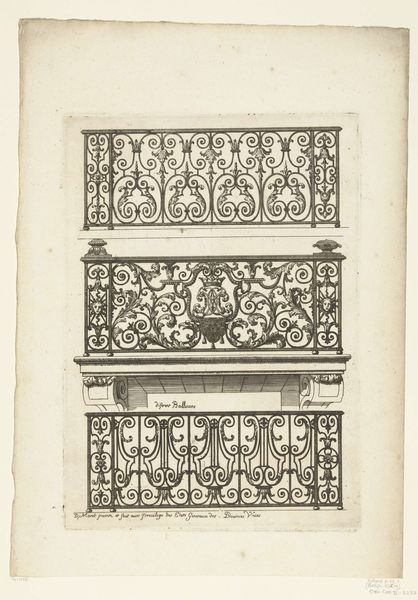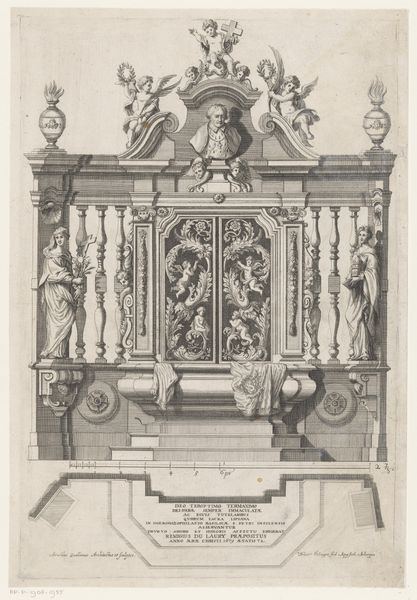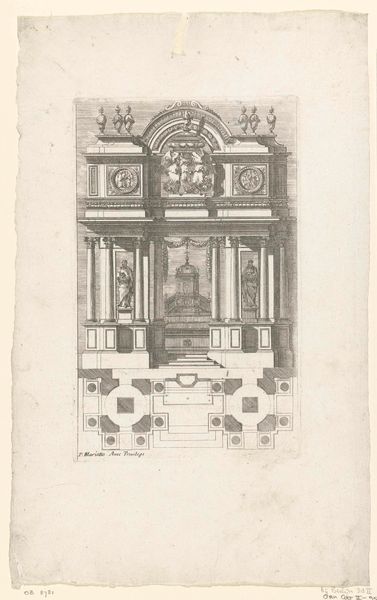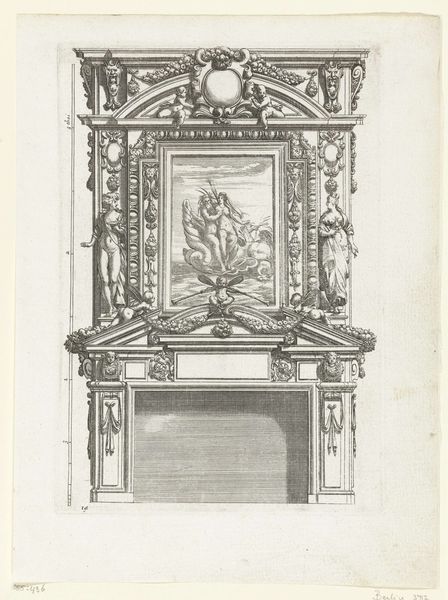
drawing, metal, paper, engraving, architecture
#
drawing
#
baroque
#
metal
#
pen sketch
#
paper
#
form
#
line
#
engraving
#
architecture
Dimensions: height 338 mm, width 223 mm
Copyright: Rijks Museum: Open Domain
Editor: This detailed engraving, titled *Kabinet*, dates back to 1642 and is currently held at the Rijksmuseum. The artwork seems to depict an elaborate piece of furniture or architectural design, rendered with meticulous linework. The overall feel is very formal, almost austere, despite the obvious opulence it’s trying to convey. How do you interpret this work in terms of its historical and social context? Curator: Well, the precision of the lines, typical of Baroque engravings, gives us a sense of the emphasis on detail and display that permeated 17th-century society. Think about the function of the *kabinet* itself—a piece of furniture designed to showcase precious objects, often acting as a symbol of power, wealth, and knowledge for those who could afford such luxury. The human figures on this Kabinet; do you think their form and position relate to ideas about who gets to occupy these spaces of prestige? Editor: I hadn't thought of that! The figures, seemingly male and female caryatids, do project a sense of classical authority and reinforce hierarchies. Is this perhaps reinforcing established norms around gender and class? Curator: Exactly. This meticulous design, meant to be both beautiful and imposing, ultimately served to solidify the social standing of those who possessed such objects. It reflects the complex interplay between art, power, and social identity, doesn't it? These material objects played a central role in building one's status and reputation, for the consumption of the right spectators, with the "correct" gender presentation. This resonates even today. What do you make of that connection to contemporary society? Editor: I think the parallels are really striking. Even today, there’s an undeniable connection between material possessions and social standing. Perhaps we see echoes of the kabinet in contemporary displays of wealth. I now see so much more in this piece beyond just design and architecture. Curator: Indeed. By understanding the historical and social forces at play, we can really appreciate how seemingly innocuous objects become entangled in power dynamics and broader social narratives.
Comments
No comments
Be the first to comment and join the conversation on the ultimate creative platform.
